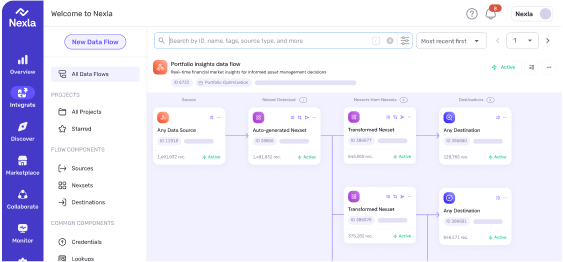
BigPanda on Production-Ready AI Agents
In this third episode of DatAInnovators & Builders, BigPanda’s Alexander Page shares how his team designs AI agents that internalize corrections, evaluate tool use, and scale reliably in production.

While the pace of AI innovation has been exponential, enterprise adoption is struggling to keep up. At the 2025 Data + AI Integration Summit, Nexla CEO Saket Saurabh sat down with Sol Rashidi, Chief Data & AI Officer and seasoned enterprise leader at Estee Lauder, AWS, Merck, etc. to unpack what it takes to turn AI pilots into production success.
Watch the session recording below 👇
AI is rapidly advancing from foundational models to retrieval-augmented generation, reasoning capabilities, and agentic workflows. Yet many enterprises remain stuck in “proof-of-concept purgatory.”
“Of the 200 AI deployments I’ve led,” said Sol, “only 48 made it into production and are still in use today.”
This isn’t unique to her experience. Industry-wide, over 80% of AI projects stall before production. The biggest reasons?
The result: AI is often piloted, but rarely scaled.
While technical challenges exist, Rashidi emphasized that enterprise maturity is what limits success instead of model performance.
She pointed to three overlooked gaps:
A core theme of the session was that most AI projects fail because they start with the wrong use case. Rashidi’s advice: stop chasing high-profile or glamorous projects and focus on feasibility.
She offered a structured framework:
“Not everything should be solved with AI,” she noted. “Sometimes, a simpler tool does the job better and faster.”
Use cases that align with a company’s current readiness and risk tolerance are far more likely to succeed.
Beyond technical challenges, Rashidi warned about a subtle but important side effect of AI: over-reliance.
From copilots writing code to GenAI summarizing documents, people are beginning to outsource thinking, not just tasks.
“We’re not just using AI to help us,” she said. “We’re using it to replace critical thinking. That has long-term consequences.”
Her recommendation?
She’s now working on a “Human Amplification Index” to help companies measure whether their AI deployments are empowering their teams or eroding capabilities.
The takeaway for business and data leaders is clear: the difference between AI hype and impact is operational discipline.
Here’s some closing advice:
“Buying an AI license doesn’t make you an AI-first company,” Rashidi said. “Operationalizing AI is about more than just the model.”
Want to hear more from Sol Rashidi?
Her full session with Saket Saurabh is available to watch on demand>>>

In this third episode of DatAInnovators & Builders, BigPanda’s Alexander Page shares how his team designs AI agents that internalize corrections, evaluate tool use, and scale reliably in production.

Explore how Express.dev makes AI agents capable of generating rich, interactive UI for structured data workflows. From XML-driven forms to real-time validation and OAuth flows, generative UI turns chat into a truly collaborative experience.

While it is true that AI offers enormous opportunities for innovation and success, its reliance on personal data raises urgent concerns about privacy, ethics, and governance
